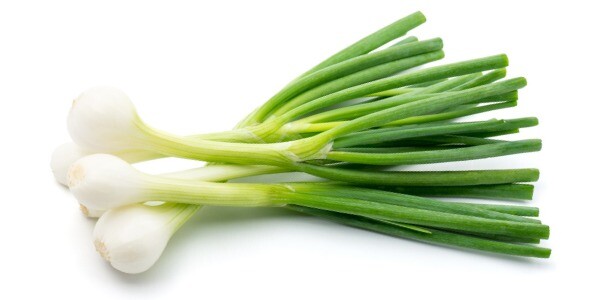
Baja California, Mexico
How is it produced?
Green onions in Mexico are primarily grown in regions with temperate climates, such as Baja Califronia and Guanajuato. Farmers typically plant seeds in well-drained soil and use drip irrigation to optimize water usage. The growing period is around 60 to 90 days, and harvesting is done by hand. After harvesting, the onions are washed, sorted and packaged for distributions.
Describe the supply chain to the store shelf in Canada:
The supply chain to the store shelf in Canada generally involves various steps including cultivation. After harvest, the green onions are cleaned, sorted and packaged by local farmers. The packaged onions are then transported via refrigerated trucks to distribution centers in Canada. From these centers, they are sent to grocery stores across Canada, where they are displayed for consumers to purchase.
What is the power balance between the producer and seller?
The power balance between the producer and seller is the interplay of power dynamics between the developed and developing nations. In this case, Larger corporations benefit significantly from green onion imports due to their ability to leverage economies of scale. They can impose policies, including pricing and quality standards, which often leads to reduced profit margins for Mexican farmers. According to Lee et al. (2012) “the lead firms are powerful and resourceful enough to set and enforce individual and collective private standard” (p.28). In this case, the larger Canadian corporations can impose prices that can pressure mexican farmers, leading to reduced profit margins for them. These farmers may struggle with high production costs and limited bargaining power. Consequently, while corporations maximize their profits, the farmers often recieve a fracton of the price. This can perpetuate cycles of poverty and inequlaity that limits their ability to invest in suistainable farming practicies.
Can you recommend changes to the system to improve the balance?
Since globalization, larger corporations have significantly influenced production in developing countries. Economic policies such as neoliberalism, free markets, privitization, and deregulation have shaped the landscape of agricultural production and supply chains. While these strategies are designed to maximize profits for corporations, they often have detrimental impacts on smaholders and producers. The power dynamics in this system typicall favor the corporations, leaving small farmers struggling to compete and suistain their livelihoods.
To improve the balance in this system, one reccommendation could be to establish fair trade practicies that ensure farmers receive a more equitable share of profits. By implementing fair trade standards, consumers can support sustainable farming practicies while providing farmers with better compensation for their hard work. Additionally, creating direct trade relationships between farmers and consumers can help bypass intermediaries, allowing farmers to retain more of their income. This approach not only empowers producers but also fosters a more sustainable and ethical food system that benefits all stakeholders involved.
References/Resources:
Alvarado, J. (2009). Fair Trade in Mexico and Abroad: An Alternative to the Walmartopia? Journal of Business Ethics, 88, 301–317. http://www.jstor.org/stable/27749706
Connell, R., & Dados, N. (2014). Where in the world does neoliberalism come from?: The market agenda in southern perspective. Theory and Society, 43(2), 117–138. http://www.jstor.org/stable/43694712
Ellwood, W. (2015). Globalization: Buying and selling the world (4th ed). Between the Lines. ISBN: 978-1-77113-245-9
Fridell, G. (2006). Fair Trade and Neoliberalism: Assessing Emerging Perspectives. Latin American Perspectives, 33(6), 8–28. http://www.jstor.org/stable/27647970
Freebairn, D. K. (1969). The Dichotomy of Prosperity and Poverty in Mexican Agriculture. Land Economics, 45(1), 31–42. https://doi.org/10.2307/3145259
Grabowski, R., & Sanchez, O. (1987). Technological Change in Mexican Agriculture: 1950–1979. Social and Economic Studies, 36(2), 187–205. http://www.jstor.org/stable/27862891
Jabbour, N. (2022b, February 24). How to grow green onions: The ultimate seed to harvest guide. Savvy Gardening. https://savvygardening.com/how-to-grow-green-onions/
Lee, J., Gereffi, G., & Beauvais, J. (2012). Global value chains and agrifood standards: Challenges and possibilities for smallholders in developing countries. Proceedings of the National Academy of Sciences of the United States of America, 109(31), 12326–12331. http://www.jstor.org/stable/41685398
Litonjua, M. D. (2008). THE SOCIO-POLITICAL CONSTRUCTION OF GLOBALIZATION. International Review of Modern Sociology, 34(2), 253–278. http://www.jstor.org/stable/41421681
Nakasone, E., Torero, M., & Minten, B. (2014). The Power of Information: The ICT Revolution in Agricultural Development. Annual Review of Resource Economics, 6, 533–550. http://www.jstor.org/stable/43202802
Overbeek, A. (2019). Examining the Efficacy of Fair Trade and Alternative Consumption on Environmental Sustainability and Human Rights in Developing Countries. Consilience, 21, 158–171.https://www.jstor.org/stable/26775089
Onions in Canada | The Observatory of Economic Complexity. (n.d.). The Observatory of Economic Complexity. https://oec.world/en/profile/bilateral-product/onions/reporter/can
Paredes-Garcia WJ, Ocampo-Velázquez RV, Torres-Pacheco I, Cedillo-Jiménez CA. Price Forecasting and Span Commercialization Opportunities for Mexican Agricultural Products. Agronomy. 2019; 9(12):826. https://doi.org/10.3390/agronomy9120826
Rockenbauch, T., & Sakdapolrak, P. (2017). Social networks and the resilience of rural communities in the Global South: a critical review and conceptual reflections. Ecology and Society, 22(1). http://www.jstor.org/stable/26270110
Senker, P. (2015). The triumph of neoliberalism and the world dominance of capitalism. Prometheus, 33(2), 97–111. https://doi.org/10.1080/08109028.2015.1070482
Tiffen, P. (2019). Who cares about Fair Trade? An introduction to the Journal of Fair Trade and the Fair Trade Society. Journal of Fair Trade, 1(1), 1–5. https://doi.org/10.13169/jfairtrade.1.1.0001
Wu, F., Qushim, B., Calle, M., & Guan, Z. (2018). Government Support in Mexican Agriculture. Choices, 33(3), 1–11. https://www.jstor.org/stable/26583607
Zahniser, S., Avendaño Ruíz, B., & Astill, G. (2023). How Mexico’s horticultural export sector responded to the Food Safety Modernization Act. In U.S. Department of Agriculture, Economic Research Service, Economic Research Service (No. 319). U.S. Department of Agriculture, Economic Research Service. https://www.govinfo.gov/content/pkg/GOVPUB-A93-PURL-gpo224262/pdf/GOVPUB-A93-PURL-gpo224262.pdf
Witkowski, T. H. (2005). Fair Trade Marketing: An Alternative System for Globalization and Development. Journal of Marketing Theory and Practice, 13(4), 22–33. http://www.jstor.org/stable/40470234

